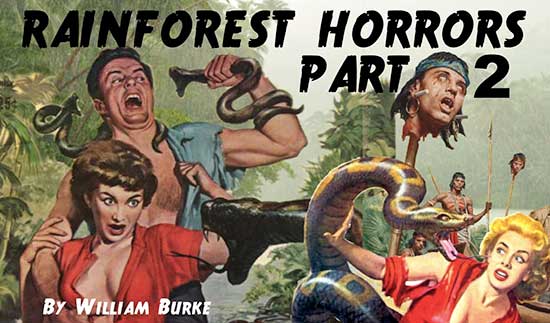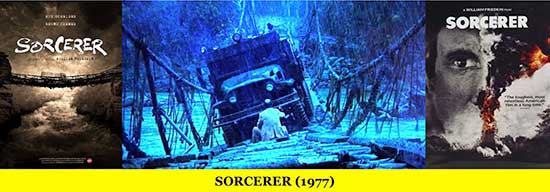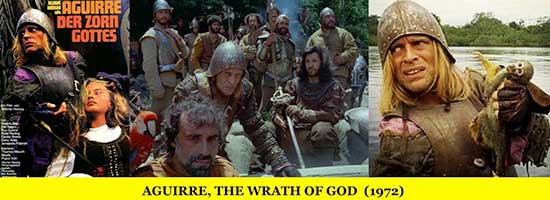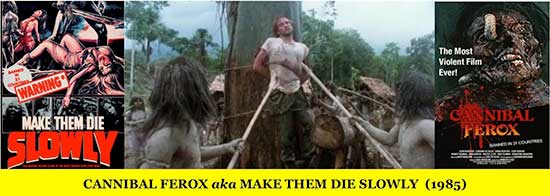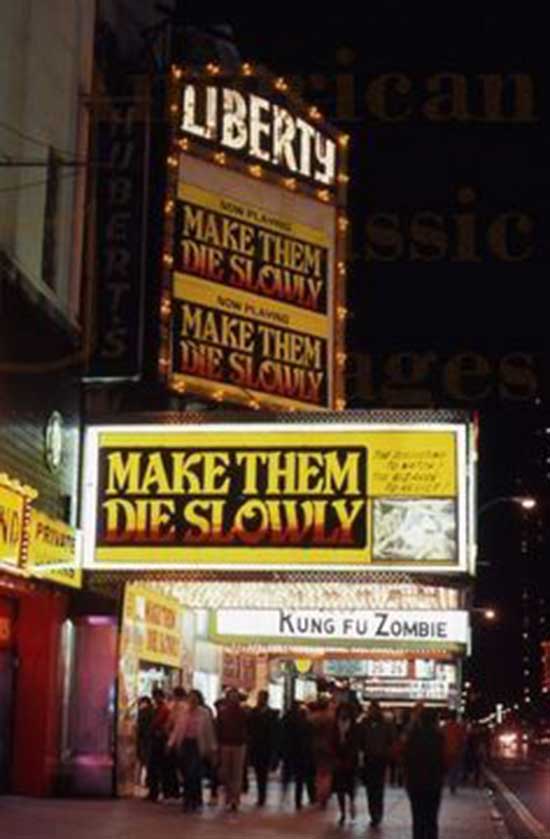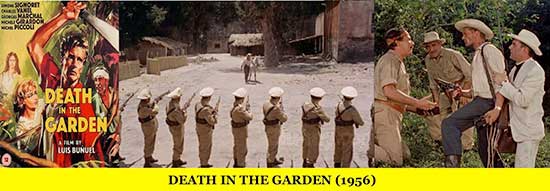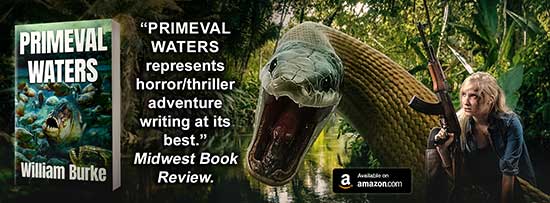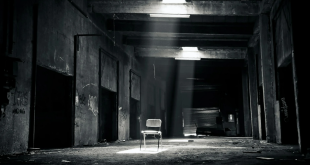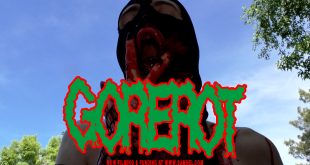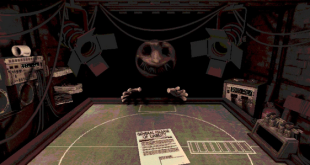Welcome back for part 2 of our expedition into that emerald green hell known as the rainforest. This leg of our journey is equal parts arthouse and grindhouse. Each of these films in some part helped shape my novel Primeval Waters. We’ll kick it off with an overlooked nail biter from the director of The Exorcist.
“I feel like the South American backdrop is the main character. It presents this vision of hell as a beautiful, decaying landscape.” Director William Friedkin’s comment perfectly sums up his nail-biting retelling of the French film Wages of Fear (1953). Sorcerer is the tale of four desperate men hired to drive trucks full of unstable explosives through the rainforest. Friedken’s follow-up to The Exorcist (1973) was the very definition of a troubled production. Over the course of filming in the Dominican Republic some fifty crew members were sent home with gangrene, malaria, food poisoning and other diseases. Friedkin himself was stricken with malaria, turning this physically demanding production almost fatal. The film’s pivotal scene of trucks crossing a rickety bridge was just as dangerous in real life. The director estimates the trucks fell into the river with stuntmen inside at least ten times. The result is a suspenseful yet hauntingly beautiful trek through an unforgiving, primordial world. Sadly, Sorcerer opened only a month after Star Wars and was buried by that cinematic juggernaut. Stephen King ranked Sorcerer as number one on his Entertainment Weekly list of “Twenty Films That Never Disappoint.” It’s a cinematic treasure worth rediscovering. But be warned—no matter how high you turn up the air conditioning you’ll still be drenched in sweat by the end credits.
“On this river, God never finished his creation.” That tagline perfectly encapsulates Werner Herzog’s maiden voyage with actor Klaus Kinski. Aguirre is a film that is experienced as much as viewed, telling the tale of a group of conquistadors navigating the Amazon by raft, enslaving and killing as they go. The film’s cast and crew traveled down the Amazon on those same log rafts, constantly at the mercy of floods, disease and the mood swings of their psychotic leading man Klaus Kinski. At one-point Kinski became so enraged by the noise coming from a hut that he grabbed a rifle and fired three shots into it, blowing the tip of an extra’s finger off. This begs the eternal question … who let Klaus Kinski near a loaded gun? On the flip side Kinski performed incredibly dangerous stunts with no doubles, including riding a raft through the rapids with four hundred wild monkeys that bit him repeatedly. His performance is volcanic, lending his character, Don Lope de Aguirre, animal magnetism. Whenever Kinski’s onscreen you can’t look away. As for jungle madness, director Werner Herzog apparently became so enraged that he pulled a gun on Kinski, while the native extras graciously offered to kill the actor if Herzog desired. Aguirre the Wrath of God may not technically be a horror film, but insanity and terror lurks around every bend in the river.
And now a few gems from the cinematic basement.
Ruggero Deodato is back to revisit his old tropical haunts. Cut and Run (Inferno Indiretta) is the tale of a reporter investigating a secret army led by Colonel Horne, a Jonestown massacre survivor terrorizing the rainforest. The film was originally slated to be directed by Wes Craven, under the title Marimba. That deal didn’t pan out, but the script still bears Craven’s stamp, particularly Michael Berryman’s machete-wielding maniac, Quecho. With a little tweaking Marimba would have been a far better Hills Have Eyes sequel than the one Craven actually made that same year. Replacement director Deodato’s eye for shooting the jungle gives the film visual panache. But, despite the director’s flair for action scenes, combined with ample gore, nudity and sadism, Cut and Run just feels like a missed opportunity. Genre veteran Richard Lynch is suitably creepy as Colonel Horne, but sitcom second banana Willie Ames (Charles in Charge) looks out of place. On the plus side, Ames fulfilled many actors’ fantasies by beating the crap out of Deodato. If you’re in the mood for ninety minutes of sweaty euro sleaze delirium, Cut and Run will quench your thirst.
“Banned in 31 Countries,” screamed this film’s advertising, and that might not be an exaggeration! Cannibal Holocaust inspired a deluge of Italian flesh-eating films, and my personal favorite is Cannibal Ferox, released in the USA as Make Them Die Slowly. Director Umberto Lenzi actually kicked off the whole cannibal genre with 1972’s Man from Deep River, but this film was clearly inspired by Cannibal Holocaust. Lenzi jettisons Deodato’s social commentary in favor of a parade of gruesome set pieces. The worst is inflicted on Italian horror veteran Giovani Lombardo Radice, who gets castrated and dismembered before having his brains scooped out for breakfast. Cannibal Ferox’s mercenary approach is so crass that it’s genuinely entertaining. I actually saw this film at the Liberty Theater in Times Square, drawn in by its fantastic front of house display—pure showmanship. Oddly enough, the print I saw was shorn of the film’s actual animal cruelty, which made it a more palatable experience, especially in the incredibly dangerous Liberty Theater. I’ve never seen Cannibal Ferox with that footage included and don’t intend to—it would soil my earlier memories.
And now one for the art lovers.
Surrealist filmmaker Luis Buñuel may seem like an odd choice to direct a rainforest survival story, but that’s what makes this film such a find. It’s the tale of a disparate group living in an unnamed military dictatorship who are forced to flee into the jungle. Their trek is full of memorable moments, both humorous and shocking. There are even a few moments plucked right out of the director’s Un Chien Andalou (1929), including a snake carcass being consumed by ants. This film’s hard to find but well worth the effort, plus you can tell everyone you were watching a Buñuel film.
And finally, here’s one for the entire family!
After surviving a plane crash in the Amazon Rainforest a tame monkey sets out on an odyssey to rediscover its natural life. Amazonia’s cinematography is amazing, and it’s impossible not to fall in love with Sai, the soulful-eyed capuchin monkey. I can’t imagine any child being bored or traumatized by this film, and they’ll come away with a newfound appreciation for the rainforest and its inhabitants.
And that’s my guide to some rainforest horror designed to infect you with jungle madness. If you’re looking for some Amazon-based horror reading check out Primeval Waters, published by those conquistadors of creature carnage at Severed Press.
 Horror News | HNN Official Site | Horror Movies,Trailers, Reviews
Horror News | HNN Official Site | Horror Movies,Trailers, Reviews
